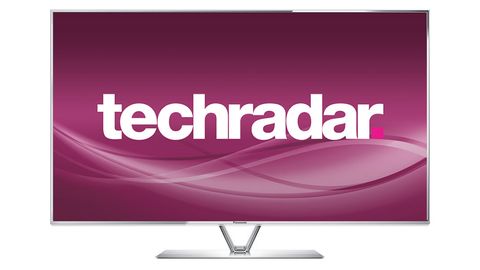Why you can trust TechRadar
My Home Screen is really quite ambitious, but unlike some smart TVs the user interface has clearly been created, tested, tweaked and tested again. It thus looks and feels polished and, most importantly of all, makes everything easier, not harder.
The fact that the underlying Panasonic TX-L42DT65B is a competent panel capable of delivering versatile pictures is a bonus.
We liked
If standard definition TV channels, DVDs and low-res web-based video look clean and highly watchable, it's HD that impresses most of all. Rich in detail and with an impressive 24p Smooth Film feature that successfully removes judder, there's a high-end look to the Panasonic TX-L42DT65B's pictures.
However, our favourite slice of the Panasonic TX-L42DT65B is the Swipe and Share functionality on the Viera app for tablets and smartphones, which brings to the fore some fabulous second screen functionality. Overall the new smart TV functions and user interface work well, and are blessed with some fast-working transitions that add a final polish.
We disliked
Some pretty average audio aside - standard for slim TVs - we've little to complain about on the throughly polished Panasonic TX-L42DT65B. Its three HDMI inputs is scrooge-like, but more serious is the presentation of both both Freesat and Freeview HD channels next to each other on My Home Screen, which could cause confusion.
As with most brands that have tried voice control, the Panasonic TX-L42DT65B's is too often inaccurate and also rather slow, though it's easier to use than on Samsung's latest smart TVs.
Final verdict
Killer smart TV and second screen apps flow from Panasonic's smallest top quality LED TV for 2013. The Panasonic TX-L42DT65B's second screen features are more ambitious than Samsung's, and use better apps that are equally kind to both iOS and Android users.
Its touchpad remote isn't as good though, while there's no built-in camera either. However, a fast-working, ambitious user interface that's easy to operate is very welcome, as is its versatile handling of all kinds of video sources.
High-definition content benefits from dazzling colour and a blur-free picture, and while black levels aren't reference-level, most living rooms won't notice.
3D is even better, though there are drawbacks; the Panasonic TX-L42DT65B's speakers are disappointing, as are voice control and the provision of just three HDMI inputs.
It's not revolutionary and neither is it perfect, but the Panasonic TX-L42DT65B's exciting second screen features make it perhaps the smartest 42-inch TV on the planet - at least for now.
Also consider
Few of the 2013 crop of TVs had been launched at the time of writing this review, but rest assured that the second-rung Panasonic TX-L42DT65B will have plenty of competition.
Samsung's 7 Series of TVs - and its UE40F7000 (£1,200) and UE46F7000 (£1,600) in particular - are sure to pose a challenge. Both come with active shutter 3D rather than the passive solution Panasonic has opted for in 2013, but have the same loading of dual tuners for both Freeview HD and Freesat HD. They also add built-in cameras, which this Panasonic lacks.
Also worth a look is the much cheaper, but equally as well-built metallic-designed Philips 42PFL6007T, which includes passive 3D playback, multimedia file playback from USB, and a much more basic Net TV online platform.
Jamie is a freelance tech, travel and space journalist based in the UK. He’s been writing regularly for Techradar since it was launched in 2008 and also writes regularly for Forbes, The Telegraph, the South China Morning Post, Sky & Telescope and the Sky At Night magazine as well as other Future titles T3, Digital Camera World, All About Space and Space.com. He also edits two of his own websites, TravGear.com and WhenIsTheNextEclipse.com that reflect his obsession with travel gear and solar eclipse travel. He is the author of A Stargazing Program For Beginners (Springer, 2015),


